How can we create a symbiosis between the 21st century paradigms and the urban objects of the 20th century logic? The urban object of the 20th century logic: The bullring La Monumental located at the intersection of Carrer de la Marina and Gran Via de les corts Catalanes in Barcelona. The 21st century paradigm: A Biodome, a form of controlled, self-sufficient eco-system that closely replicates the natural outdoor environment.
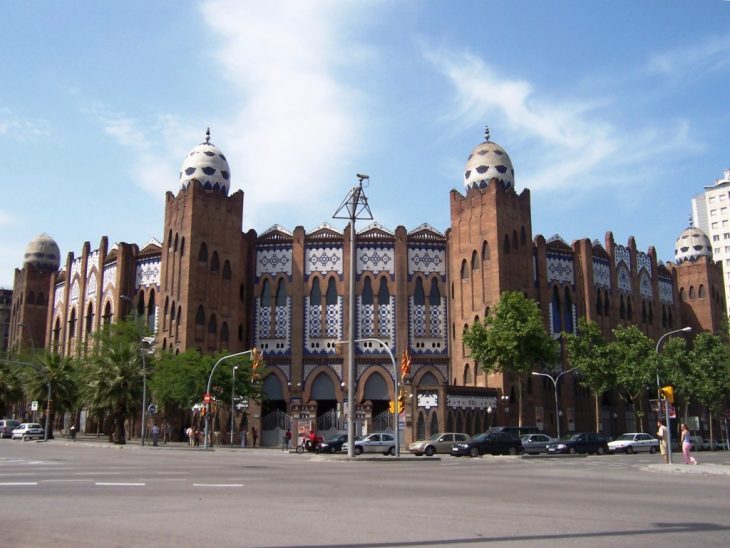
La Monumental
By carefully analysing the reasons that would govern a sumbiosis between a biodome and a bullring it was necessary to look at both those concepts through an analytical point of view, in order to identify the common denominator. In this case, the answer was that Barcelona, one of the main representatives of the Catalan mentality, had only recently denounced the age old tradition of bullfighting by deciding to close down La Monumental Arena.
Therefore, the challenge was to replace the bullring with a Biodome that would respectively transform La Monumental, a building which up till know housed an outtdated tradition, into a building that represented a more updated view on the needs of the city and the citizens.
The various functionalities of a possible Biodome in Barcelona, made us quickly realis that the one that answered most urgently to a need of the city was that of a house for bees and other pollinators, in order to ensure the future of Barcelona’s green areas and by extension its food production. To achieve that, we decided that the biodomes would be filled with flowers, plants and trees of all species by creating a variety of micro-climates that would answer to the needs of pollinator species from all the world.
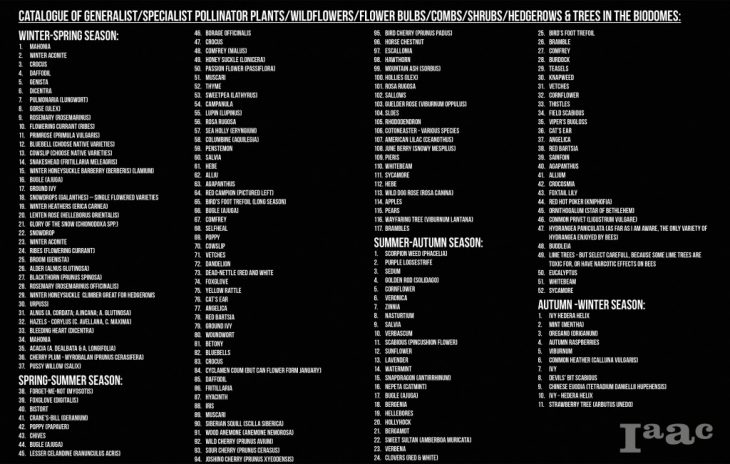
Catalogue of generalist/specialist pollinator plants/wildflowers/flower bulbs/combs/shrubs/hedgerows & trees in the biodomes.
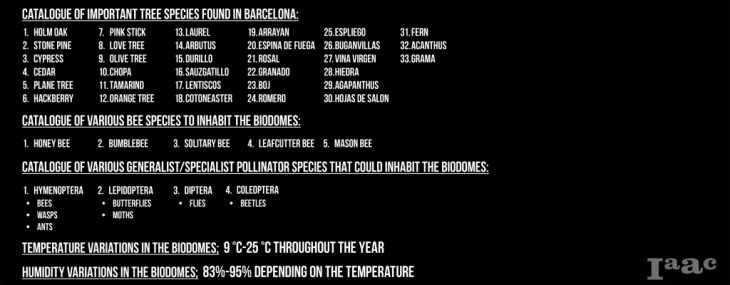
Important Trees/Bee Species/Other Pollinator Species/Temperature and Humidity variations in the Biodomes
This large beehive will be designed not only to provide a safe home for bees but also as a large infrastructure node of the Internet of Bees. By attaching sensors of atmospheric content on selected bees it is possible to collect data from the city of Barcelona and create a better understanding of the invisible layers of the city.
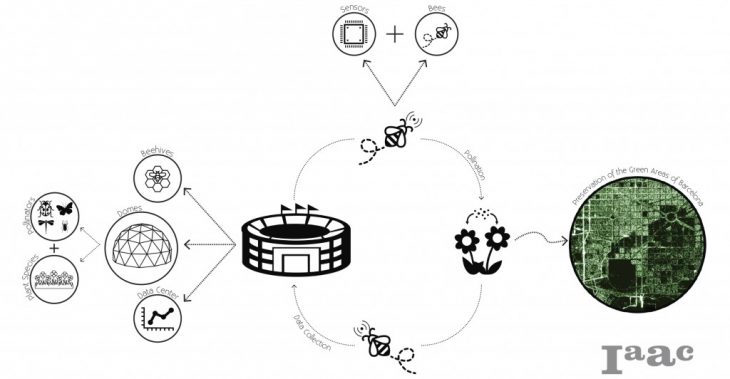
The morphological strategy behind this project finds its roots in the classic Buckminster Fuller geodesic dome. However, in an attempt to create a form that answers to the vast variety of atmospheric conditions, soils, humidity, temperature, hydration, solar intensity we created an organic growth of geodesic domes.
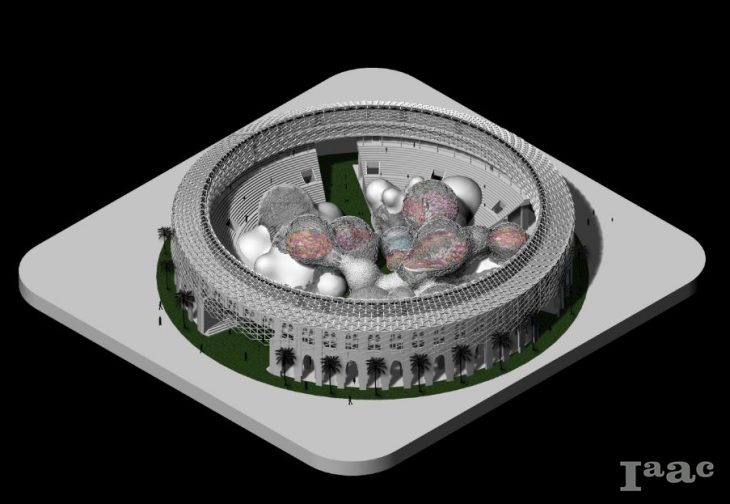
Since inside this organic growth of domes are housed plants and pollinators of all kinds it was necessary to create a variety of domes that correspond to the needs of these various plants and pollinators. Thus by devising a variety of grids that become dense if little amount of light is needed or less dense if more amount of light is needed, it was possible to respond to a large variety of conditions that define the future survival of the species that would inhabit the domes.
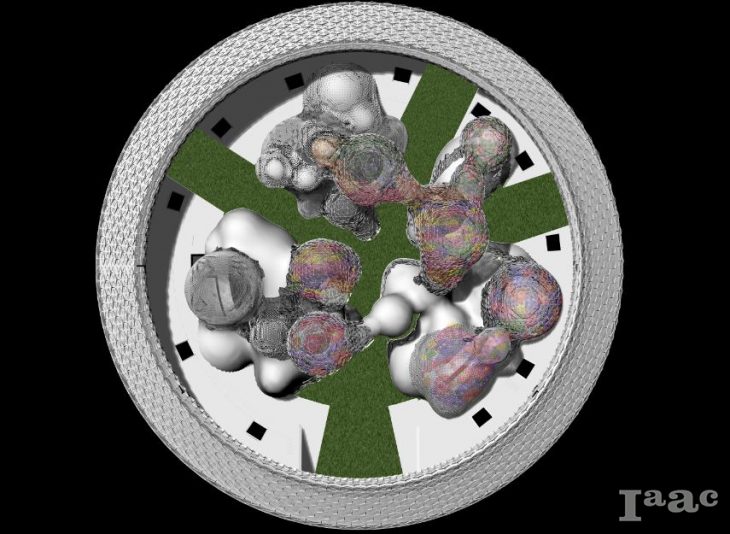
Plan of the Biodomes
Even though the pollinators are placed inside the biodomes along with the plants, the bees are separeted and are placed on the top circular floor of the arena where they can be more carefully monitored. This top floor is covered by a ”crown-like” hexagonal grid that acts as a shader for the beehives. This grid is responsive to sunlight and opens and closes depending on the position of the sun, in order to not overheat the beehives.

Section of the Biodomes
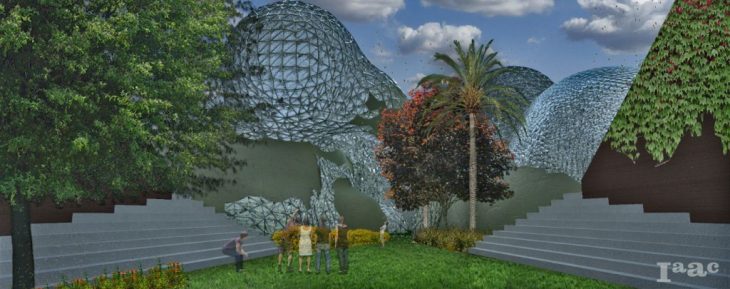
The entrance to the Biodomes.
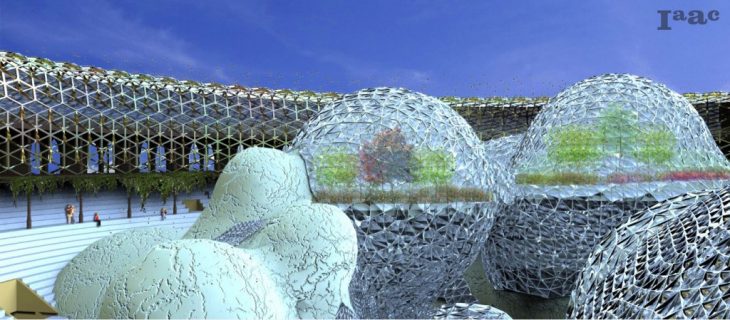
Hovering over the biodomes.
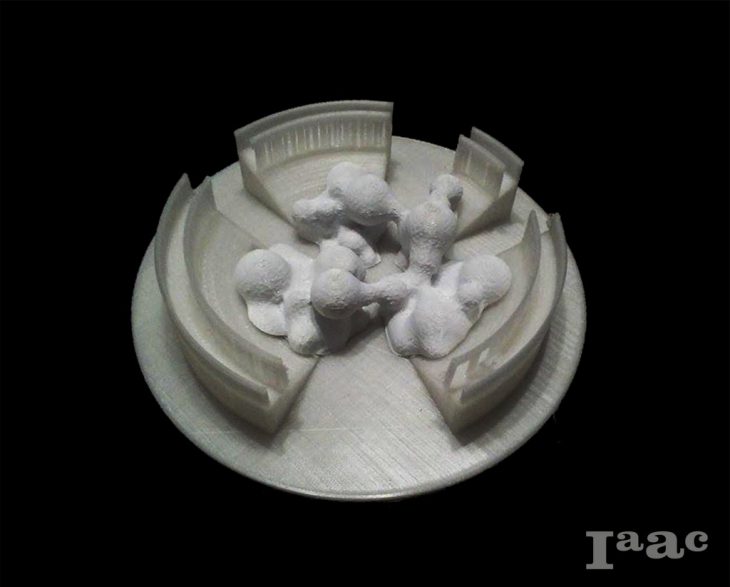
Urbiotica-Biodome is a project of Iaac, Institute for Advanced Architecture of Catalonia at Master in City and Technogy in 2016/2017 by:
Students: Alex Mademo
Faculty: Willy Müller/Jordi Vivaldi